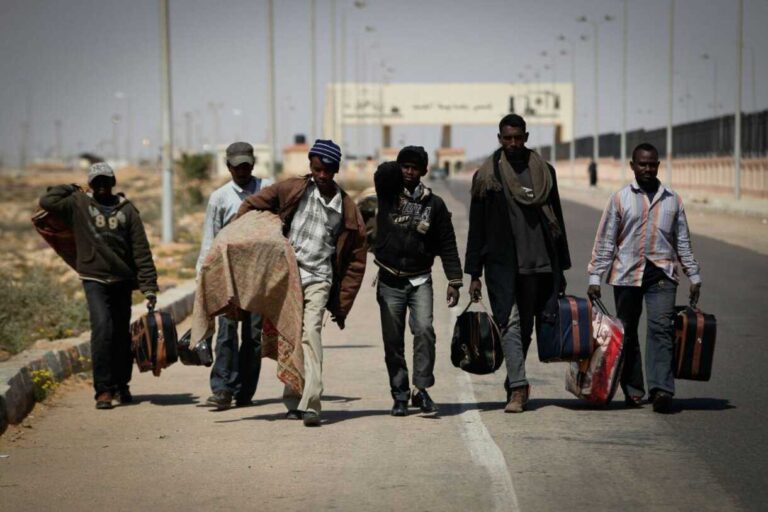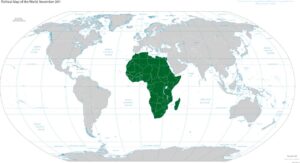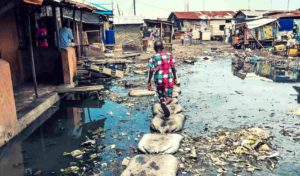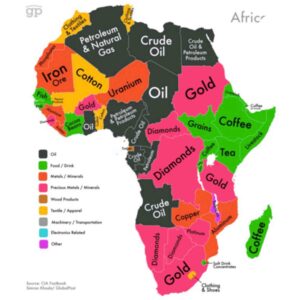10 African countries with the most economic immigration

The movement of people across borders has been a long-standing feature of African societies, with various factors such as political instability, economic opportunities, and social ties driving the phenomenon. In this article, we will explore the top 10 African countries with the most economic immigration and examine the factors behind the influx of international migrants into these countries.
Countries with the most economic immigration in Africa
| Rank | Country | Number of immigrants |
|---|---|---|
| 1. | South Africa | 2.86 million |
| 2. | Côte d’Ivoire | 2.56 million |
| 3. | Uganda | 1.72 million |
| 4. | Sudan | 1.38 million |
| 5. | Nigeria | 1.31 million |
| 6. | Ethiopia | 1.09 million |
| 7. | Kenya | 1.05 million |
| 6. | Democratic Republic of the Congo | 950 thousand |
| 7. | South Sudan | 880 thousand |
| 8. | Libya | 830 thousand |
1. South Africa
Immigrants: 2.86 million
South Africa is the economic hub of the African continent, with a thriving economy and a diverse population. The country has a rich history of immigration, with people from all over the world coming to South Africa for work, study, and tourism. As of 2022, there were over 2.8 million immigrants living in South Africa, making up around 7.2% of the population.
Despite the benefits that immigrants bring to the South African economy, there has been some tension between immigrants and the local population. In recent years, there have been incidents of xenophobic violence against immigrants, particularly those from other African countries. This has led to calls for greater tolerance and understanding between different communities in South Africa.
2. Côte d’Ivoire
Immigrants: 2.56 million
Côte d’Ivoire, also known as Ivory Coast, is a West African country with a rapidly growing economy. As of 2022, there were around 2.5 million immigrants living in Cote d’Ivoire, making up around 10% of the population.
The majority of immigrants in Cote d’Ivoire come from neighboring countries such as Burkina Faso, Mali, and Guinea. These immigrants often work in low-skilled jobs in industries such as agriculture and construction. However, there are also a significant number of skilled immigrants in Cote d’Ivoire, particularly in fields such as medicine, engineering, and finance.
3. Uganda
Immigrants: 1.72 million
Uganda is a landlocked country in East Africa, with a growing economy and a diverse population. As of 2021, there were around 1.7 million immigrants living in Uganda, making up around 3% of the population.
The majority of immigrants in Uganda come from neighboring countries such as South Sudan, Congo, and Rwanda. These immigrants often work in low-skilled jobs in industries such as agriculture and construction. However, there are also a significant number of skilled immigrants in Uganda, particularly in fields such as medicine, engineering, and education.
4. Sudan
Immigrants: 1.38 million
Sudan is a country in North Africa with a population of over 40 million people. As of 2021, there were around 1.3 million international immigrants living in Sudan, with the majority coming from neighboring countries such as South Sudan, Ethiopia, and Eritrea.
Most of the immigrants in Sudan come to work in low-skilled jobs in sectors such as construction and agriculture. There are also skilled immigrants in the country who work in fields such as medicine, engineering, and finance. Sudan has been a country of destination for refugees for decades, particularly those fleeing conflicts in neighboring countries. As such, Sudan has a large refugee population, estimated to be over a million people.
5. Nigeria
Immigrants: 1.31 million
Nigeria is the most populous country in Africa, with over 200 million people. As of 2021, there were around 1.3 Million international immigrants living in Nigeria, with the majority coming from neighboring countries such as Benin, Niger, and Cameroon. Most of the immigrants in Nigeria come to work in low-skilled jobs in sectors such as agriculture, construction, and domestic work.
There are also skilled immigrants in the country who work in fields such as engineering, medicine, and IT. Nigeria has also been a country of destination for refugees, particularly those fleeing conflicts in neighboring countries such as Cameroon and Chad.
6. Ethiopia
Immigrants: 1.09 million
Ethiopia is a country in East Africa with a population of over 100 million people. As of 2021, there were around 1.09 million international immigrants living in Ethiopia, with the majority coming from neighboring countries such as Somalia, Eritrea, and South Sudan. Ethiopia has been relatively welcoming to immigrants, with a number of policies in place to support their integration into society.
For example, the government has established the Ethiopian Refugee Agency to provide support and protection to refugees and asylum seekers. However, there have been some incidents of discrimination and abuse against immigrants, particularly refugees and asylum seekers. The government has taken steps to address this issue, but there is still much work to be done to improve the situation for immigrants in Ethiopia.
7. Kenya
Immigrants: 1.05 million
Kenya is a country in East Africa with a population of over 50 million people. As of 2021, there were around 1.05 million international immigrants living in Kenya, with the majority coming from neighboring countries such as Uganda, Tanzania, and Somalia. The government of Kenya has been relatively welcoming to immigrants, with a number of policies in place to support their integration into society.
For example, the government has established the Refugee Affairs Secretariat to provide support and protection to refugees and asylum seekers. However, there have been some incidents of xenophobic violence against immigrants, particularly those from other African countries. This has led to calls for greater tolerance and understanding between different communities in Kenya.
8. Democratic Republic of the Congo
Immigrants: 950 thousand
The Democratic Republic of the Congo (DRC) is a country in Central Africa with a population of over 80 million people. As of 2021, there were around 900,000 international immigrants living in the DRC, with the majority coming from neighboring countries such as Rwanda, Burundi, and Uganda.
Most of the immigrants in the DRC come to work in low-skilled jobs in sectors such as agriculture and construction. There are also skilled immigrants in the country who work in fields such as medicine, engineering, and education. The DRC has also been a country of destination for refugees, particularly those fleeing conflicts in neighboring countries such as Rwanda and Burundi.
9. South Sudan
Immigrants: 880 thousand
South Sudan is a country in East-Central Africa with a population of around 12 million people. As of 2021, there were around 800,000 international immigrants living in South Sudan, with the majority coming from neighboring countries such as Uganda, Kenya, and Ethiopia.
Most of the immigrants in South Sudan come to work in low-skilled jobs in sectors such as agriculture and construction. There are also skilled immigrants in the country who work in fields such as medicine, engineering, and education. South Sudan has also been a country of destination for refugees, particularly those fleeing conflicts in neighboring countries such as Sudan.
10. Libya
Immigrants: 830 thousand
Libya is a country in North Africa with a population of around 7 million people. As of 2021, there were around 100,000 international immigrants living in Libya, with the majority coming from neighboring countries such as Tunisia, Egypt, and Niger.
Most of the immigrants in Libya come to work in low-skilled jobs in sectors such as construction and domestic work. There are also skilled immigrants in the country who work in fields such as medicine, engineering, and finance. Libya has also been a country of destination for refugees, particularly those fleeing conflicts in neighboring countries such as Syria.
Conclusion
Economic immigration has been a key feature of African societies, with many countries attracting international migrants in search of better economic opportunities.
By understanding the factors driving this phenomenon, policymakers can create policies and programs that support the integration and well-being of immigrants in these countries.
Don't miss a thing. Follow us on Telegram and Follow us on WhatsApp. If you love videos then also Subscribe to our YouTube Channel. We are on Twitter as MakeMoneyDotNG.




